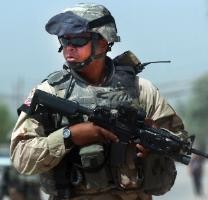A few months ago, I penned an essay for a WPR feature issue on counterinsurgency arguing that the U.S. Army was adrift as it transitioned out of the wars in Iraq and Afghanistan. In terms of the Army’s direction, that remains the case: While the U.S. Navy and Air Force have already crafted a narrative for how they can help the United States meet the security challenges of the 21st century, the Army is still pining for the days when the Soviet Union and its armies, poised to storm across the Fulda Gap, presented an intellectually simpler problem to solve.
If the Army is unmoored strategically, however, there is good news to report with respect to the way in which it has survived a decade of war in Iraq and Afghanistan. Americans, U.S. allies and U.S. adversaries should all take note.
In the aftermath of the Vietnam conflict, of course, the U.S. Army was a shadow of its former self. Drug abuse was widespread within the ranks, and discipline was low among the conscripted soldiers who made up the force. An external evaluation cited by James Kitfield in his book “Prodigal Soldiers” at the time warned Army leaders that the Army was “close to losing its pride, heart and soul and therefore its [combat effectiveness].”

